Performance Modifications for Rat Rig V-Core 3: A Comprehensive Guide
The Rat Rig V-Core 3 is a solid choice for 3D printing enthusiasts, offering a strong foundation for those looking to enhance its performance. This guide outlines how to upgrade the Rat Rig V-Core 3 from its basic kit form to a tailored 3D printing powerhouse. We'll start by examining the original kit before moving on to detailed modifications, covering frame, enclosure, mechanics, electronics, motors, hotend, extruder, and cooling. Each section provides links to top aftermarket parts, some that you can purchase and some that you will be able to print. All of these mods are focused at making your V-Core print faster, be more reliable, and with better print quality.
Introduction to Rat Rig
Rat Rig, a Portuguese company, carves a unique niche in the 3D printing industry by crafting hardware, products, and DIY kits aimed at nurturing the creative spirit in both hobbyists and professionals1. Established in 2014 in a quaint garage in southern Portugal, Rat Rig has burgeoned from a DIY passion project into a distinguished entity in the realms of 3D Printing and CNC. Now operating from a 1000m² warehouse near Faro, it hosts a vibrant team of around 30 individuals, continuing its journey of innovation.
The company has positioned itself as a one-stop-shop for all OpenBuilds parts in Europe, boasting a diverse and ever-expanding collection of kits and bundles. These offerings cater to those enticed by the idea of building their own 3D printer or CNC machine, providing them with an array of resources to realize their projects.
A noteworthy aspect of Rat Rig's ethos is its vibrant community engagement. The company values the feedback and interactions with its users, which in turn shapes its future product strategies. This dynamic community is also a hub for more advanced users to share modifications they've made to their machines, fostering a culture of continuous learning and improvement.
| Rat Rig V-Core 3 Quick Links | |
|---|---|
| V-Core 3.1 Configurable Kit | Click Here |
| V-Core 3.1 Enclosure 2.0 Kit | Click Here |
| V-Core 3.1 Documentation | Click Here |
| V-Core RatOS Documentation | Click Here |
| V-Core CAD Files | Click Here |
Overview of Rat Rig V-Core 3 Kits
Rat Rig presents two distinct versions of the V-Core 3 kit: the standard kit and a customizable kit. The standard kit is an ideal pick for individuals keen on entering the 3D printing world with a well-rounded, reliable setup right from the get-go. It encompasses all crucial components necessary for assembling and operating the printer, bar a few items which need to be sourced separately.
However, it's important to note that certain items are not included in the kit. These are:
Power cord: A power cord with a plug is needed to connect the machine to a power outlet. Due to worldwide shipping and varying plug types across countries, this item isn't provided.
Extra printed parts: Items like LAN/IEC adapter and back-spine/nut/collar for cable routing on the electronics panel are not included, although they are non-essential and can be printed later.
IEC/LAN Plug: These are optional and need to be sourced by the user.
Cable crimping: A crimping tool may be necessary for assembling the electronics.
Optional Electronics panel and enclosing panels: Meant to be locally sourced by the user with provided DXF files to assist in acquiring the correct size, shape, and hole patterns. It's recommended to use 4mm thick polycarbonate sheets, ensuring the thickness doesn't exceed 4mm to avoid interference with the XY motors.
Fasteners for mounting electronics to the back panel: Although eight generic nylon spacers are included, additional fasteners might be needed.
Extension cables for BLTouch, fans, and limit switches: Depending on the machine size, extension cables may be required as the components ship with short cables. Recommendations for extending the cabling are provided in the kit documentation.
For those with a penchant for personalization, the customizable kit is an open canvas. Unlike the standard kit, this variant allows users to choose and integrate additional components, aligning the printer to their specific needs and preferences. This includes altering elements like the frame, electronics, and motion system, paving the way for a bespoke 3D printing experience.
Both kits provide a solid foundation, but the customizable kit notably paves the way for myriad modifications, setting the stage for the detailed upgrade guide in the subsequent sections. The modular design of V-Core 3 epitomizes Rat Rig's dedication to offering a platform that evolves alongside the user's skills and ambitions.
Frame Modifications
The Rat Rig V-Core 3 comes with a robust frame right out of the box. The stock frame, comprised of beefy 4040 aluminum extrusion, is a solid choice that provides ample stability for most 3D printing tasks. Moreover, the inclusion of metal plates in the kit further contributes to the rigidity and reliability of the frame structure.
Despite its sturdy build, there's a modification that some users might find beneficial:
3D Printed Bracing
VzBoT Frame Brace on V-Core 3 (Source: David Wang on Rat Rig Facebook Group)
A popular addition among the V-Core community is the 3D printed bracing from VzBot. Many users have embraced these braces to enhance the frame stability, reducing any minor flex that might occur during intense printing sessions.
Download the stl for the brace from VzBoT below
Extrusion Filling
Lead shot + epoxy filled 4040 extrusion. (Credit: Matt Stull on Voron Facebook Group)
A more specialized modification involves filling the aluminum extrusions with lead shot mixed with epoxy to mitigate resonances. Although this mod is beyond the needs or wants of most users, and may not significantly impact the machine's performance, it aims to reduce vibrations especially at higher printing speeds. This could potentially lead to improved print quality in some high-speed printing scenarios.
Enclosure Modifications
The enclosure is a pivotal aspect of the Rat Rig V-Core 3, especially for those who plan to print with high-grade engineering filaments like ABS, ASA, Nylon, or Polycarbonate. A well-designed enclosure helps in maintaining a controlled environment, ensuring optimal layer adhesion and minimizing warping, which in turn, enhances the overall print quality.
Rat Rig offers an enclosure kit for the V-Core 3.1 which includes all the necessary hardware except for the panels. The panels need to be sourced locally or online, and in this section, we will discuss the optimal material choices for the panels if you plan to get them made locally. Additionally, we'll go over a few providers who sell panel kits online, easing the process for those who prefer a ready-made solution.
Here’s my V-Core 3 500mm with aluminium composite panels.
Material Selection
The choice of material for enclosure panels is pivotal in thermal management, especially when printing with high-grade engineering filaments. Acrylic is a common choice due to its affordability and availability. However, it's not the optimal choice concerning fire resistance. While it doesn't catch fire easily, it can melt and potentially add fuel to a fire (further research on this behaviour is advised).
Polycarbonate is a preferred material due to its higher fire resistance compared to acrylic; it tends to melt rather than burn and usually self-extinguish once the fire source is removed. However, if it does catch fire, it can release toxic fumes.
For those seeking a premium and fire-resistant option, composite aluminum panels like Alumapanel or similar materials such as Alupanel®, Alumalite® Standard, or ALPOLIC®/fr, are excellent choices. These panels consist of a core material sandwiched between two thin sheets of aluminum, offering superior fire resistance, better thermal insulation, and a sleek aesthetic appeal. However, unlike acrylic or polycarbonate panels, these do not offer the advantage of viewing the printing process.
Your choice among these materials hinges on your budget, your desired level of fire safety, and the importance of viewing the printing process to you. Each of these materials significantly impacts thermal management. Acrylic or Polycarbonate are often chosen due to their excellent thermal insulation properties and clarity, which allows for easy monitoring of the printing process.
Purchasing Panels Online
For those who prefer a ready-made solution or may find it challenging to source panels locally, there are online providers that offer panel kits specifically designed for the Rat Rig V-Core 3. Below are two reputable providers where you can purchase panels online:
Mandala Rose Works
Mandala Rose Works offers custom-cut panels for the Rat Rig V-Core 3. They provide panels for the V-Core 3 + V-Core 3.1 as well as the newly released V-Core IDEX. You can choose between Acrylic or Polycarbonate in either a clear or smoked finish.
Clearview Plastics
Clearview Plastics specializes in plastic panels, offering a range of options that are pre-cut and ready for installation on your V-Core 3. Their offerings include both PVC and polycarbonate panels, and you can choose from either 3mm/4mm/6mm.
Clearview Plastic Panels - Rat Rig V-Core 3 Panels
Print Bay
This is for the European users. They provide V-Core 3 base and electronic panels that are made of 3mm thick aluminum composite material.
The enclosure and enclosure lid panels are made of 4mm thick polycarbonate (transparent). You can also get your panels made of carbon, fibreglass, aluminum, or MDF upon request.
Sealing Gaps
Sealing any gaps in the enclosure with high-temperature silicone or adhesive foam tape can help maintain a consistent internal temperature, which is crucial for achieving the best results with engineering filaments.
High-Temp Silicone
This is great for sealing the cracks inside the enclosure, between the frame and then panels. It will make sure that no air is getting in or getting out. It might be a messy job but it will be worth it when you can achieve a steady chamber temp.
Adhesive Foam Tape
This is great for creating a gasket between the door and the frame, making sure none of the warm chamber air escapes.
Reflective Insulation
Reflective insulation materials such as reflective foil or foam with a reflective surface can be used to line the interior of the enclosure. They reflect radiant heat, helping to keep the internal temperature stable.
Air Filtration
3D printing, especially with materials like ABS, can produce Volatile Organic Compounds (VOCs) and ultrafine particles that may pose health risks or be unpleasant to breathe. These emissions can become a concern in enclosed or poorly ventilated spaces. Transitioning from this, there are several options available to filter the air within the printing chamber. A notable advantage of filtering the chamber air and recirculating it back into the chamber is the maintenance of a warm environment, specifically channeling the warm air from the top of the chamber to the bottom which is beneficial for printing materials that require a controlled temperature.
Here are a few project guides to building a chamber air filtration system, which can be a fun and rewarding endeavor for those looking to improve their 3D printing setup:
BRS Engineering - BRS-CF80 Filtration Solution
This is an awesome unit that is located in the back of the printer and recirculates the air from the chamber. It includes a HEPA + Carbon filter and the new V1.2 model includes a servo-controlled flap that lets you choose between circulating the air or having it exit the chamber.
You have 2 options for this filter: you can either print the files and source the hardware and filters yourself, or you can buy them from BRS Engineering.
CYBORGCNC - RRVC3MOD Activated Carbon Filter
This option takes warm air from the top of the chamber, filters it, and then pushes it to the bottom of the chamber where it exits. This helps maintain a steady chamber temp.
Nevermore Max
The Nevermore air filtration system is a popular accesory in the Voron community. This Max version is perfect for the V-Core’s larger size and air filtering requirements.
V-Core 3 V1.0 Bistable Enclosure Lift
If you use, or are planning to build, the V1.0 enclosure then this is a must-have upgrade. The original kit includes actuators that don’t do a great job at holding the weight of the lid. This mod does a much better job and it only requires a small amount of hardware and some decent filament like ABS or ASA.
Open-Front Mod
This mod allows you to remove the 3030 aluminum extrusion from the front of your printer making the entire front open.
BRS Engineering Open-Front Mod
You can buy this kit in either PA-CF or ASA and it comes with all the hardware you’ll need.
V-core 3.1 Open-Front Mod w/ Belt Tensioning
This mod gives you an open-front and includes a belt-tensioning system so you can use a VZ printhead or one similiar.
OneBox Open-Front V-Core 3 Printer Mod
Complete OneBox V-Core 3 mod files
Mod and all files fully compatible with both V-Core 3 and 3.1 upgrade.
STEP files available on request.
Motion System
The motion system is the backbone of any 3D printer, including the Rat Rig V-Core 3. It ensures precise and smooth movement of the printer's head and bed, which, in turn, affects the print quality significantly. The Rat Rig V-Core 3 employs a coreXY motion system known for its speed and precision. However, there's always room for improvements and modifications to achieve better performance and ease of use.
Linear Rails and Carriages
Quality Linear Rails
Upgrading to high-quality linear rails and carriages can enhance the smoothness and precision of the movement. Here’s a few reputable brands that offer buttery-smooth rails for a trouble-free printing experience:
Lightweight Linear Rails
If you want to move fast, you have to be light and these linear rails might be the lightest you will find. These are meant for your x-axis and they have mass removed so you can reach higher speeds with higher accels. They might not be the highest quality compared to the other options, but they definitely win the weight race.
Bearings
Upgrading to high-quality bearings is a crucial step for enhancing the performance of your Rat Rig V-Core 3. Superior bearings minimize friction, promoting smoother motion along the axes, which in turn leads to better print accuracy and quality. They also reduce wear and tear on the machine, leading to lower maintenance requirements and a longer operational life.
The HoneyBadger Hybrid Bearing Kit is a commendable choice for this upgrade. It's specifically designed for the V-Core 3, offering a blend of durability and precision that significantly boosts the printer's performance, making your 3D printing endeavors more efficient and reliable.
Belts
Upgrading to premium belts can minimize backlash and ensure more accurate positioning. Opt for belts with reinforced materials such as steel or aramid fibers to achieve optimal performance and longevity. High-quality belts will provide a more precise and reliable motion system, which is crucial for achieving the desired print quality.
Gates is the most trusted name for high-quality belts. Their high-temp version is a worthwhile upgrade if you’ll be running a heated chamber.
X + Y Motor Damping Solutions
Implementing damping solutions can significantly reduce noise and vibrations, contributing to better print quality. One effective method is decoupling the stepper shaft, which minimizes noise. By placing a bearing at both the top and bottom of the shaft, it remains straight and parallel to the idlers regardless of belt tension. This setup ensures the belt always stays centered on pulleys and idlers, resulting in less wear over time and more precise movement.
Z-Axis Upgrades
The stock Z motors will work just fine since they will never see high speed or acceleration. The motor mounts, bed arms, and leadscrews can use some improvement.
Another great mod is to convert the lead screws to ball screws. They have greater rigidity and durability while having greater efficiency and accuracy. Read our article on ballscrews here.
CNC Bed Arms Upgrade
A notable upgrade for the Rat Rig V-Core 3, especially the v3.1 model, involves the replacement of the standard bed arms with machined bed arms. These machined arms, crafted from 6061 Aluminum, follow the Kelvin style kinematics, ensuring a more stable and precise bed movement.
They are designed to work in conjunction with micro-wobblers available on the same site, though these are not a requirement. Unlike the VCore-3.0 Anti-backlash nuts, these arms necessitate the purchase of compatible anti-backlash nuts for your lead screws.
CNC Motor Mounts
These CNC aluminum motor mounts will provide a solid base for your Z-motors and will be able to stand up to higher temps in a heated chamber.
BRS-Engineering - Ballscrew Upgrade
Replacing the original Z-axis with a ballscrew system brings about enhanced precision, long-term reliability, and high repeatability in Z-axis movement compared to a trapezoidal screw.
Wobble-X - Ballscrew Upgrade
The Wobble-X is a simple upgrade that allows you to use cheap, even bent, ballscrews and still produce amazing looking prints.
Gantry Upgrades
Lightweight X-Rail
Reducing the weight of the X-rail can lead to faster print speeds and better quality, especially on overhangs and bridges. Here are some options to achieve a lightweight X-rail setup on the Rat Rig V-Core 3:
Aluminum + Carbon Fibre XY Joiner Plates
This kit replaces the stock aluminum and plastic joiner pieces and helps shed weight and add rigidity.
AWD Upgrade
The AWD (All Wheel Drive) upgrade is a notable modification that introduces an additional stepper motor to both the X and Y axes of the Rat Rig V-Core 3, making a total of two-steppers controlling the motion on each axis. This enhancement significantly increases the torque and precision of the motion system. By having a dual-stepper setup on each axis, the printer can handle higher-speed printing operations while maintaining a high level of print quality. It's a substantial upgrade for those aiming to achieve faster printing speeds without compromising on the print resolution and accuracy.
There are a few options out there made by Rat Rig users but I think the premium choice is this version from BRS-Engineering
Printhead
The stock V-Core kits uses the EVA 3 printhead system which allows you to use a combination of different hotends and extruders. It also has belt-tensioning built into it which makes it an all-in-one system. It is a little heavy, lacks heatsink cooling, and is of course, made of plastic.
The premium choice is CNC Vz-printhead from VzBoT 3D.
Vz-Printhead CNC
The printhead is CNC aluminum, is super lightweight (lighter than a printed version), is strong, rigid, and allows you to mount a few different extruders and hotends.
There is a printed version which is still a great option if you don’t want to buy the CNC aluminum version.
If you go this route, you will need a belt tensioning system to accompany it. You can find that as the next item on this list.
Rear Belt-Tensioning System
A Stock V-Core uses the EVA 3 printhead that has belt-tensioning built into it. If you plan on running pretty much any other printhead, you will need to find another belt-tensioning solution. There are a few user-mod options available but I’ve listed one of the only premium options available which is from BRS Engineering.
BRS has 2 versions of their belt-tensioning system available:
The M1 is more of an ‘add-on’ to your V-Core which gets installed at the back of your V-Core.
The M2 replaces the stock rear motor block.
You can either purchase a complete product printed in high-quality CF Nylon/ASA/PCCF, or buy just the hardware and print your own.
Bed Upgrade
Extra Thick Cast Tooling Bed
The stock bed of the Rat Rig V-Core 3 comes as a 6mm thick cast tooling plate, which is already a solid choice for ensuring a flat surface for your prints. However, there are thicker options available in the market that can push the precision a notch higher. These thicker beds provide better resistance to warping, maintaining a flat surface over a wider temperature range, and typically have tighter flatness tolerances. If you are looking to achieve an even higher level of precision with your prints, considering a thicker bed might be a worthwhile upgrade.
Electronics
The electronics within your 3D printer are the puppet masters behind the scenes, orchestrating the precise movements and operations that bring your creations to life. Upgrading this section of your printer opens the doors to higher speeds and better acceleration, enhancing your printing experience.
Mainboard Upgrades
The heart of your printer's electronics, the mainboard, is where every command is processed and sent out to the respective components. Upgrading to a more potent board like the BigTreeTech Octopus Pro or the Mellow Super 8 can provide a noticeable improvement in performance and capabilities.
Driver Upgrades
Your Rat Rig V-Core 3 comes equipped with TMC2209 drivers which are excellent performers for the Z-axis and extruder. However, if you're chasing more power and precision, especially for high-speed printing, upgrading to a 48V system with the TMC5160HV Pro 1.2 drivers for the X and Y-axes is a worthy consideration.
Power Supply Upgrade
Power is the lifeblood of your printer, and ensuring a steady and sufficient supply is crucial for optimal performance. Transitioning to a 48V power supply for running the X and Y axes can significantly boost the speed and accuracy of your prints.
Raspberry Pi 4B
Integrating a Raspberry Pi 4 into your setup enables you to run RatOS, which is Rat Rig's tailored version of the Klipper firmware. RatOS provides a streamlined user interface and a more manageable way to control your V-Core 3. By utilizing a Raspberry Pi 4, you have a dedicated system to manage printer operations, ensuring a smooth user experience and providing a solid foundation for any further electronic modifications you might consider.
Bed Probe
The Beacon Probe is probably the best bed probe option on the consumer market right now. It’s lightweight, resistant to high-heat, and generates a highly detailed bed mesh extremely quickly. Read our article on the Beacon probe here.
Motors
The V-Core kit comes equipped with LDO-42STH48-2504AC motors, which are quite reliable and deliver solid performance right out of the box, particularly on the Z-axis where high speed or acceleration isn't crucial. However, when it comes to the X and Y axes, there's room for improvement to enhance the machine's performance.
For those aiming for the pinnacle of performance, the LDO-42STH48-2804 Super Power motors by LDO are the recommended upgrade. These motors are designed to operate optimally at 48v, which will provide all the high-speed power that you’re looking for.
Check them out in action here.
Hotend
The efficacy of a hotend is often evaluated based on three core metrics: the volumetric flow rate it can achieve, the peak temperatures it can withstand, and its compatibility with a diverse range of filaments. In this segment, our focus shifts to the Goliath hotend, a collaborative creation by Mellow 3D and VzBoT 3D. This particular hotend is lauded for its exemplary performance across these key indices, marking it as a commendable upgrade for those pursuing superior output quality.
Goliath Hotend
The Goliath hotend is made with premium materials, can be used with standard V6 style nozzles, and can be pushed to extreme speeds. With a 0.5mm nozzle, you can expect volumetric flow of around 70mm/s³.
The goliath comes in 3 variations: air-cooled, water-cooled, or paired with the water-cooled Vz-Hextrudort-Low.
Nozzles
The nozzle is one of the easiest upgrades you can get to improve print speed and print quality. The options below will do both while having amazing durability giving you worry-free printing when using abrasive filaments.
The Bondtech CHT nozzle will drastically improve your volumetric flow rate. The standard brass nozzle is great for non-abrasive filaments while the bi-metal is abrasive-resistant.
The Bozzle Nozzle is made of Tungsten Carbide and is marketed as “the last nozzle you’ll ever need”. (It’s been sold out for a while but if they ever get restocked, I would recommend you grab one)
The Diamondback nozzle has a solid diamond tip and allows you to print any filament while being able to outlast the life of your printer. Here’s a video on the Diamondback from Void Star Lab.
Extruder
There are many premium extruder options available, but the current standout is the Vz-Hextrudort-low from VzBot and Mellow 3D, offering a robust all-metal construction and exceptional functionality, especially when paired with the Goliath hotend in a water-cooled setup.
Vz-Hextrudort-Low
The Vz-Hextrudort-Low is CNC’d out of aluminum which gives you rigidity and resilience to high chamber temps while being extremely light. Paired with the 10T motor, this extruder can withstand a lot of amps and produces a ton of torque.
The water-cooled version allows you to use the Goliath hotend with an incredibly short filament path. It’s a pairing that is unmatched in the consumer market.
Cooling
In this section, we will be focusing on part cooling and the water-cooling setup for the extruder, hotend, and motors using aluminum water-cooling blocks from VzBot and Mellow 3D. Efficient cooling is vital for maintaining optimal operating temperatures and ensuring high-quality prints, especially during high-speed printing.
Part Cooling
The Rat Rig V-Core kit comes with the option of 4028 fans for part cooling, which is a reliable choice as they provide substantial airflow. However, a superior alternative would be the CPAP fan which not only exhibits remarkable flow and pressure but also transfers the weight away from the toolhead, enhancing the printer's performance.
Additionally, we will provide links to a Remote Static Cooling System (RSCS) just like what you can find on a VzBoT printer. This system employs two large fans positioned at the printer's base, with ducts mounted to the side and outlets at the top. This setup facilitates cool air flow across the build plate, aiding in plastic cooling during high-speed printing when the toolhead's part-cooling isn't adequate.
CPAP Fan
A CPAP fan produces high airflow while removing weight from the toolhead. This is crucial for high-speed printing.
If you choose a CPAP fan for part-cooling, you’ll need a solution to mount it to your printer. Here’s a super simple one from VzBoT and a more complicated version from Dan Cernogorsky on Printables:
Remote Static Cooling System (RSCS)
This system significantly enhances print quality at high speeds by blanketing the bed with a cool air blast, which promptly solidifies the material in the absence of part-cooling.
Tentacool Cooling Duct
The Tentacool cooling duct is a heavenly gift from MirageC, the man behind the HevORT project, and helps you tackle high-speed printing. Instead of just focusing the direction of air at the nozzle, this spreads the air out over the build area helping the extruded filament cool and harden before the next layer is printed on top.
This duct only works with the vz-toolhead which you’ll find here.
Water-Cooling
Water-cooling systems represent the next frontier in performance consumer printing, offering a superior solution to thermal management challenges. Unlike traditional air cooling, water-cooling efficiently dissipates heat from critical components ensuring consistent performance even during extensive printing sessions. The adept heat dispersion not only enhances the printer's operational efficiency but also significantly improves the quality and precision of prints. As 3D printing continues to advance, incorporating a water-cooling system in your Rat Rig V-Core 3 is a savvy upgrade that places you at the cutting edge of printing technology, guaranteeing an unmatched printing experience.
Water-Cooling Kit + Accessories
We've touched on the water-cooled hotend and extruder earlier, and in this section, the emphasis will be on the components required for the water-cooling setup. We'll provide links for the necessary parts, along with the resources for water-cooling the stepper motors which could be a vital upgrade for those looking to push their printer's performance boundaries.
Water-Cooling Stepper Motors
If you plan on running 48v to your steppers, this mod will help control the temps so they can print faster for longer periods of time.
Transforming your stock V-Core into a powerhouse of a printer is within reach by implementing the modifications discussed in this guide. Each upgrade takes you a step closer to achieving a highly optimized, efficient, and robust machine capable of tackling complex printing tasks with ease. We encourage you to share any additional mod suggestions in the comment section below.
Related Articles






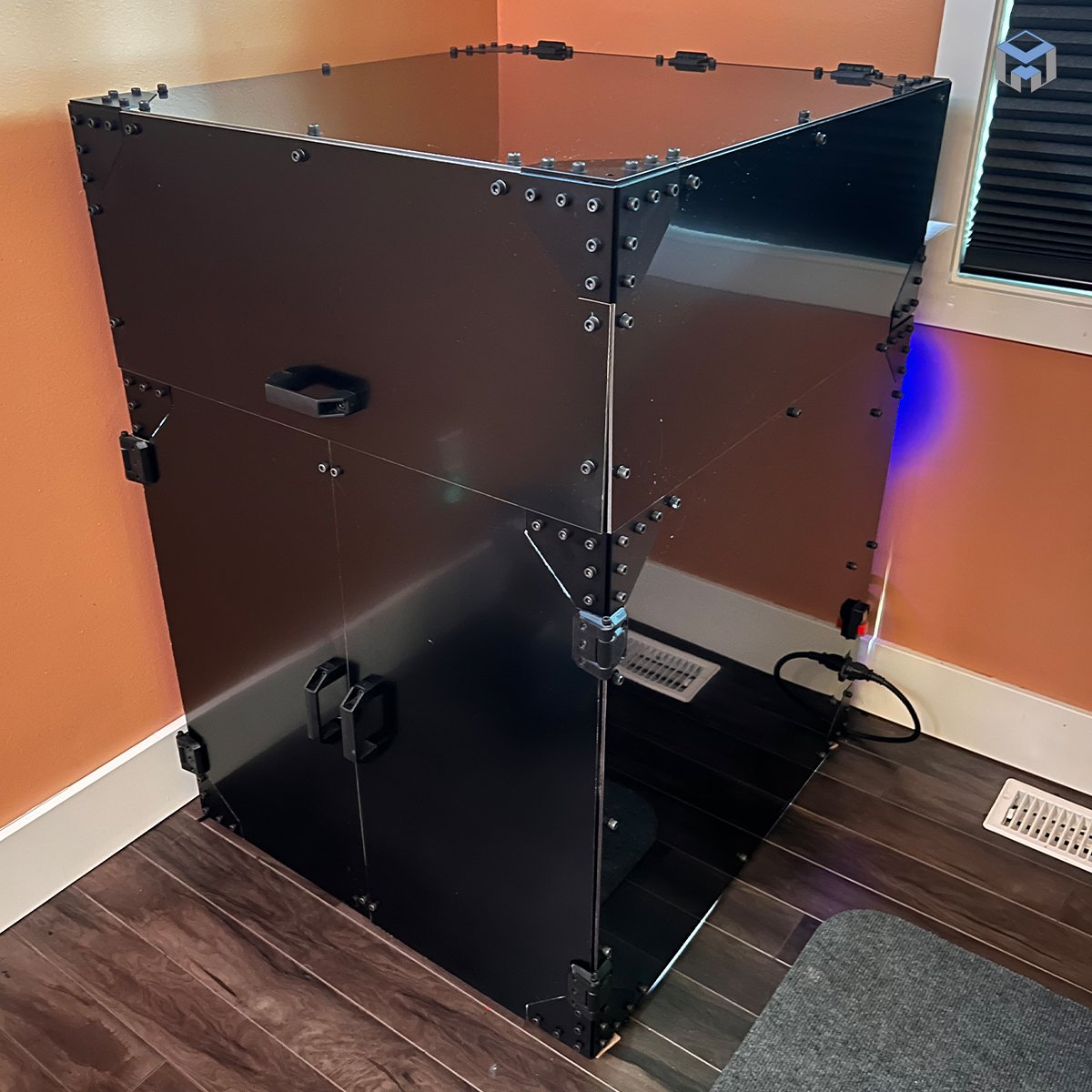
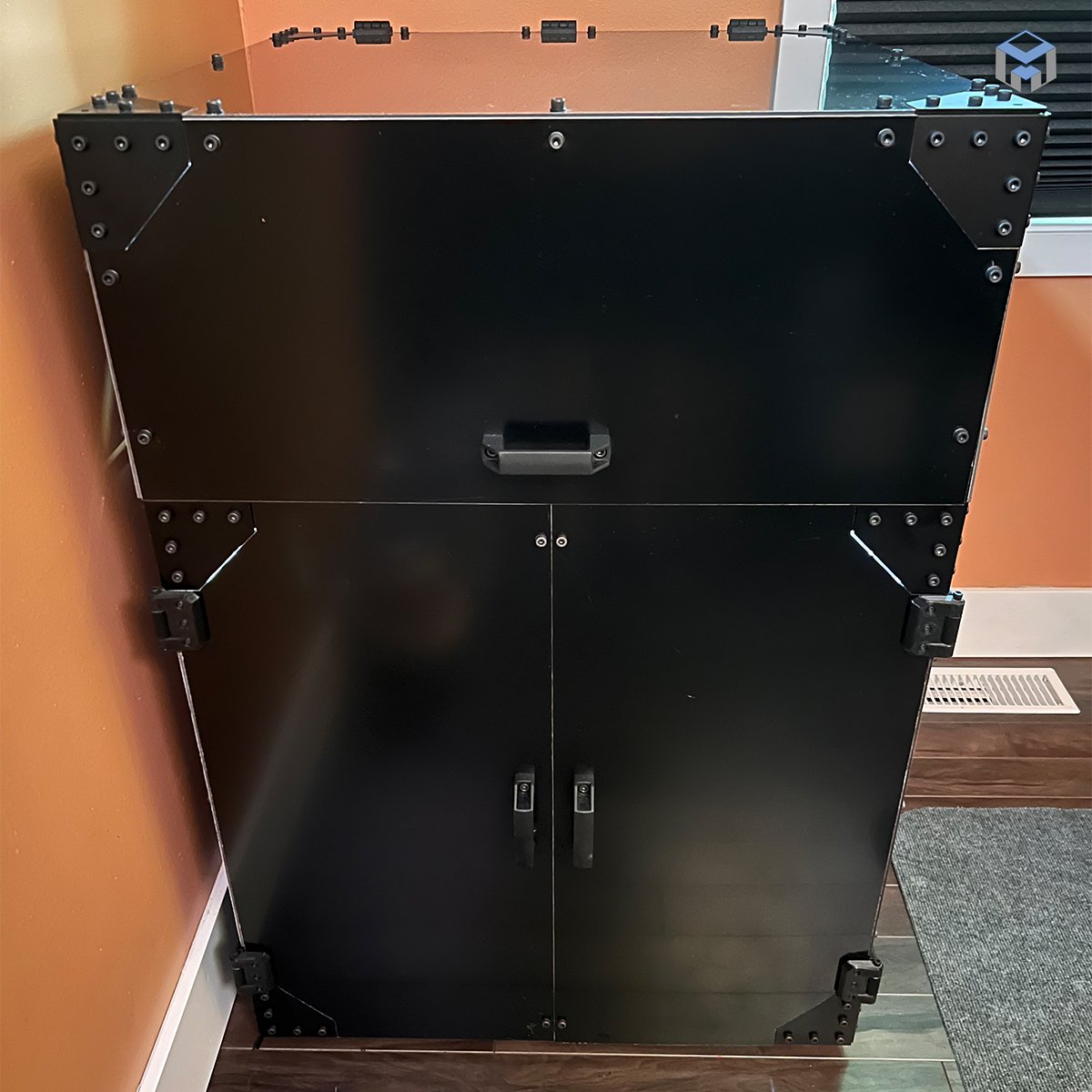
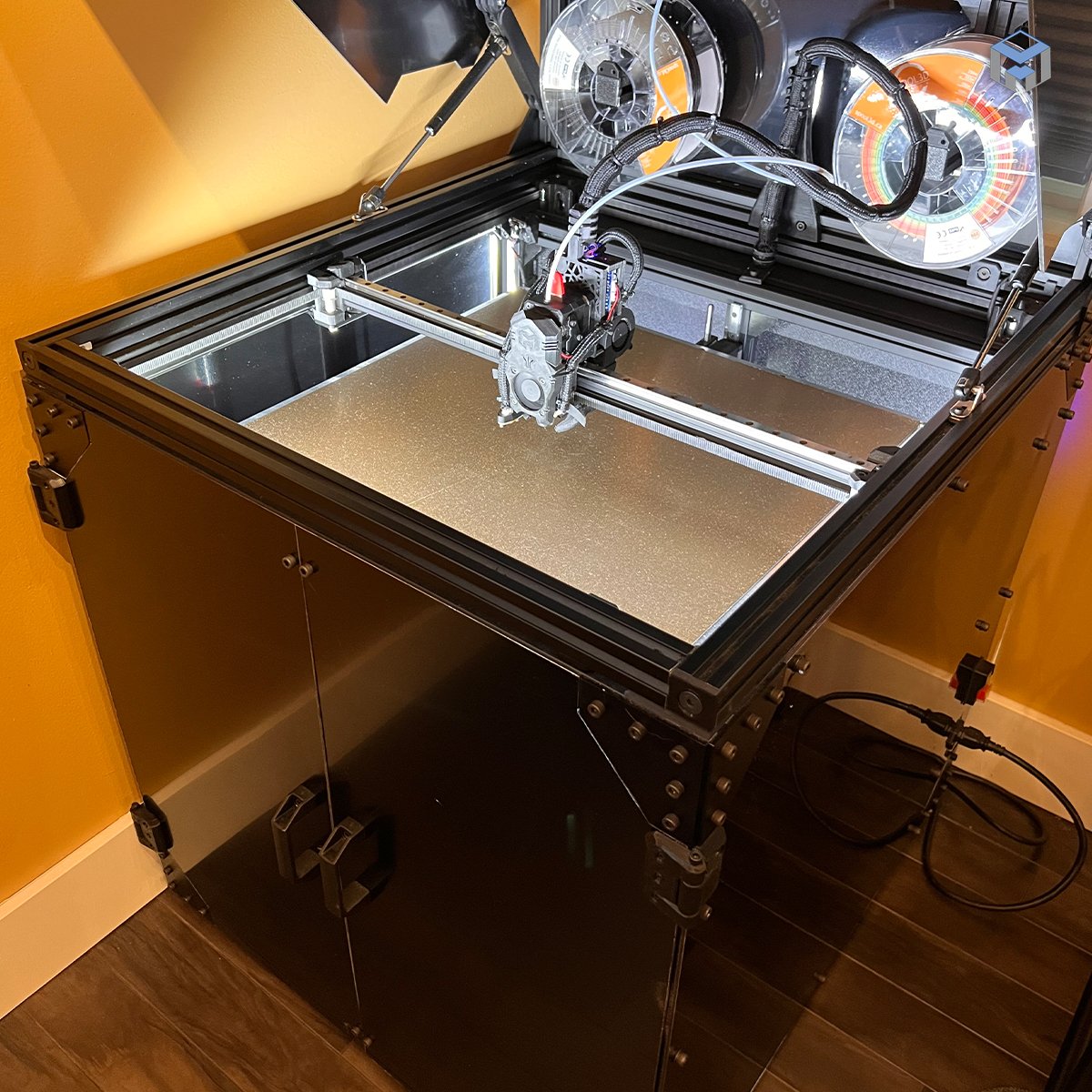
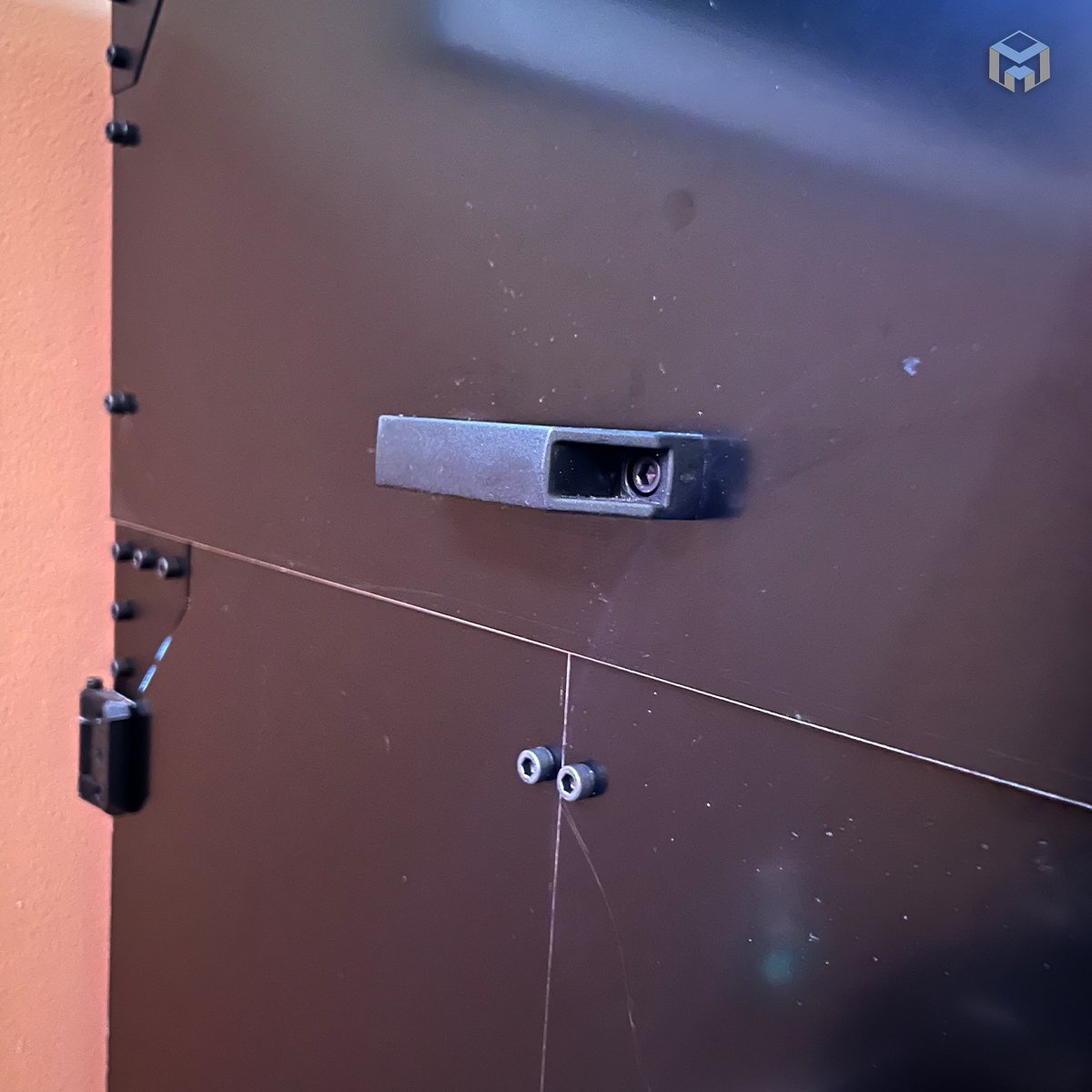
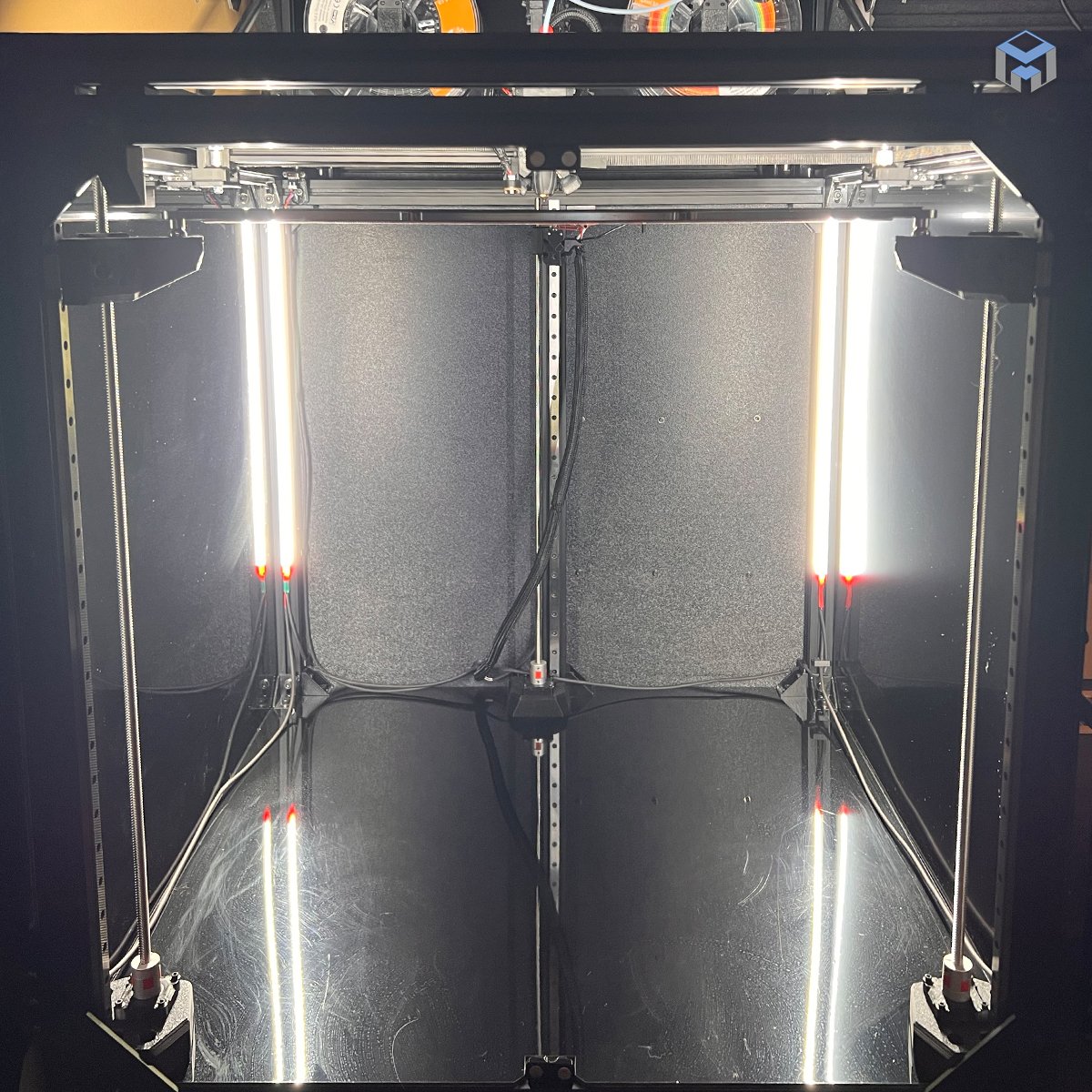
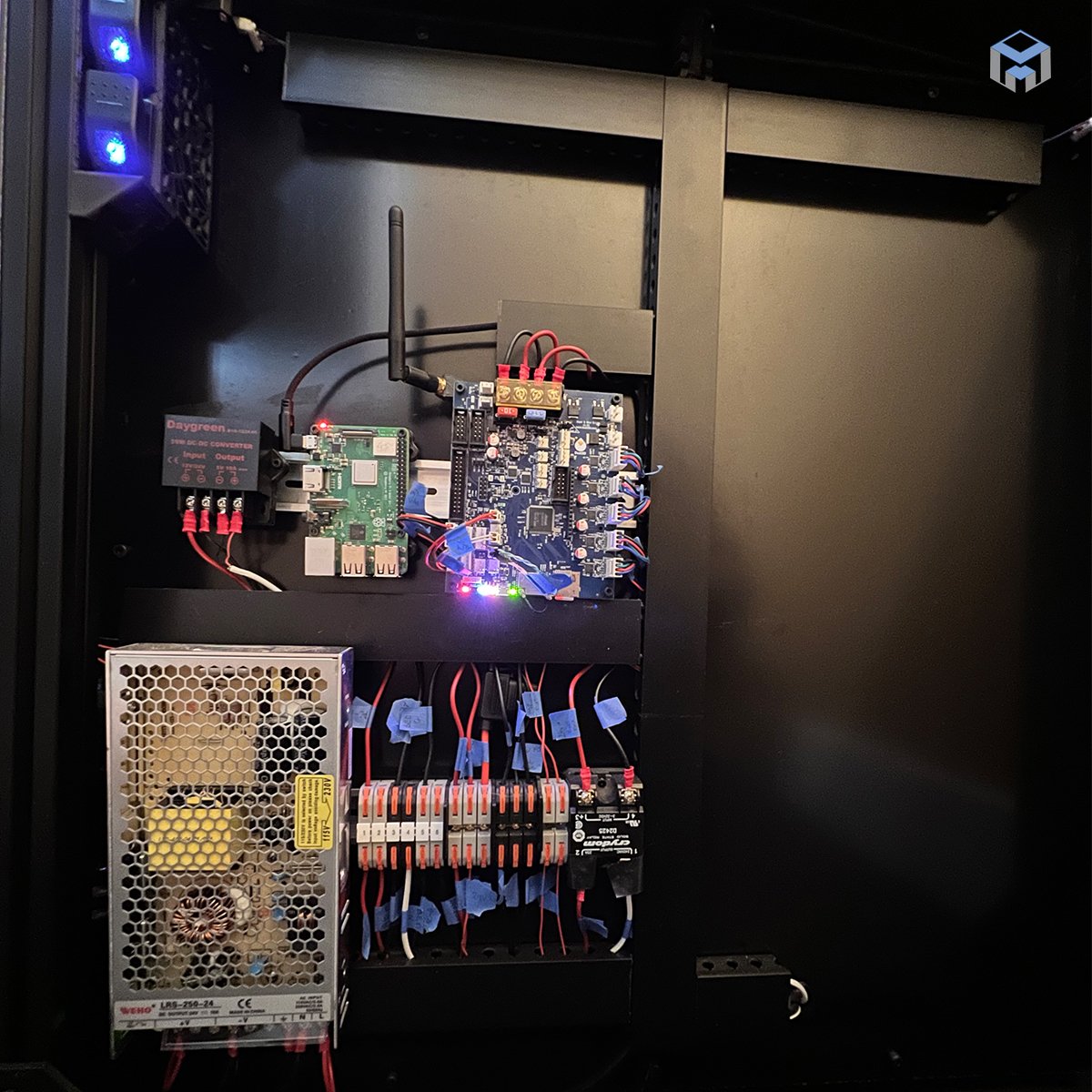























































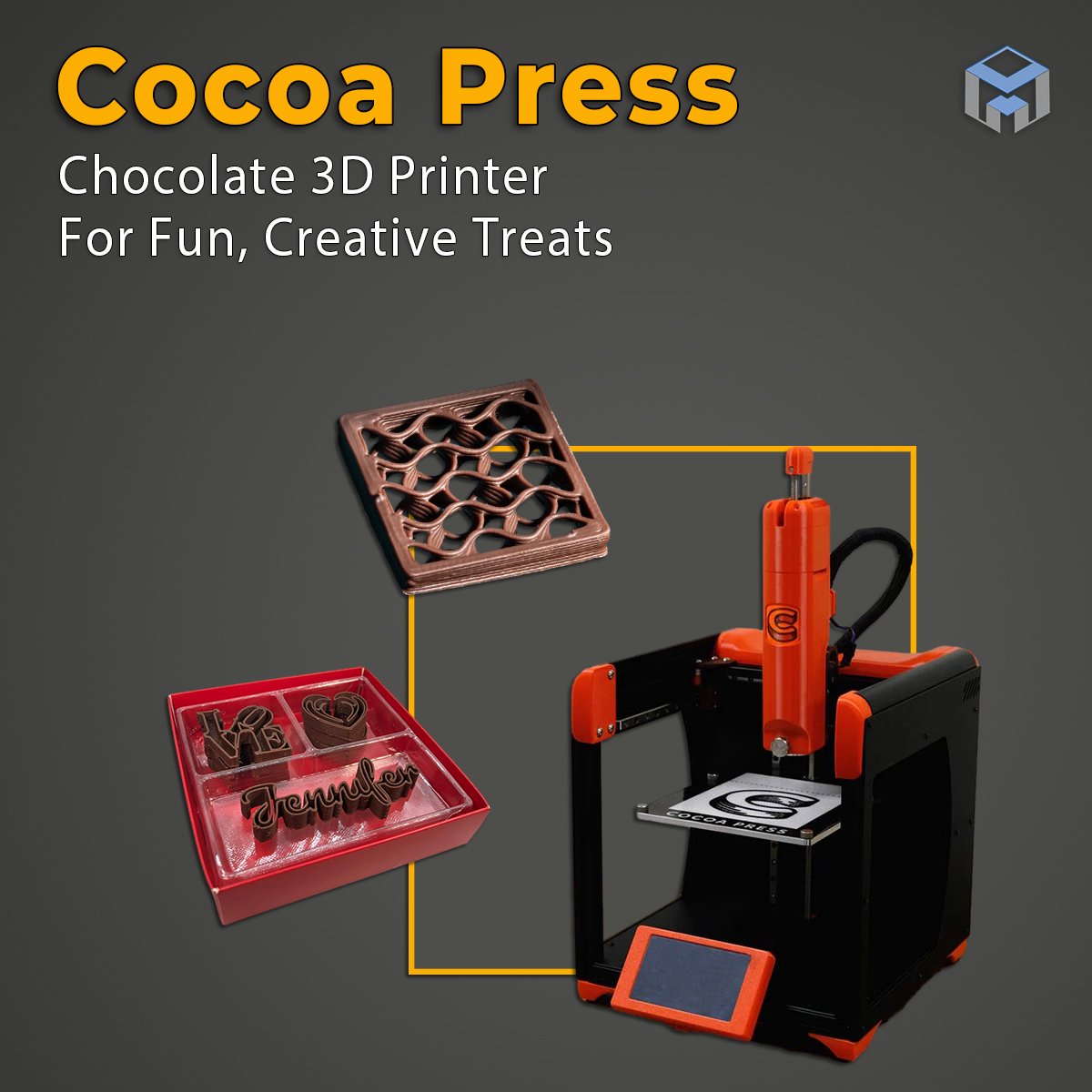



HevORT teams up with Mellow 3D to offer modular 3D printer kits, allowing for full customization and control over your printing setup.